Finland is a country of diverse and breathtaking landscapes, from the vibrant and art-filled cities of Helsinki and Turku to the depths of the boreal forests and thinly inhabited outer archipelago. Although it may not be a well-known destination, Finland’s many cultural and historical sites, coupled with its unspoiled natural surroundings, make it an ideal place to explore.
With its abundant lakes, fells, rivers, and vast wilderness, and the certainty of snow in winter, Finland offers a Nordic playground for winter and summer activities alike.
Most visitors arrive in Helsinki, the busy Baltic port, where the most important museums and the architecture of some of Finland’s greatest architects can be found, as well as numerous things to do. The charming smaller cities of Turku and Porvoo are also within easy reach of Helsinki.
However, it would be a pity to restrict your trip to just the Baltic coast when so much stunning open countryside awaits. To the west lie the Finnish lakes, and to the north is the vast area beyond the Arctic Circle, where the midnight sun, northern lights, and some of Europe’s best winter sports can be experienced.
Whether you’re visiting in winter or summer, Finland has plenty of things to do. Check out our list of top attractions and places to visit in Finland to plan your trip.
1. Suomenlinna Fortress
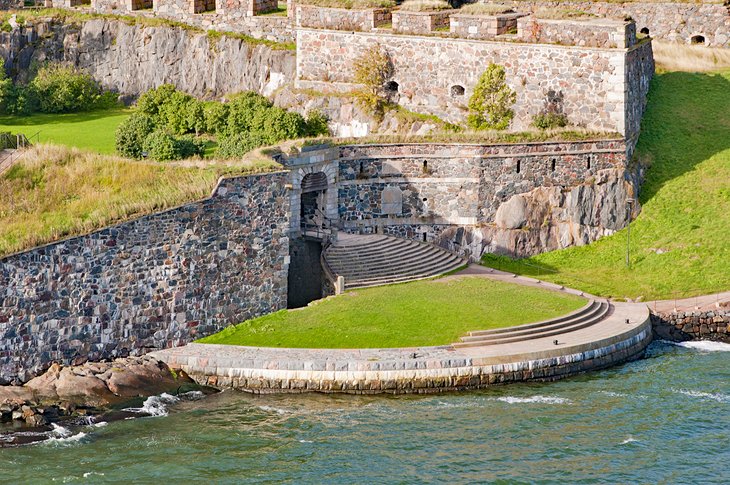
Located just a 15-minute ferry ride from Helsinki’s Market Square, Suomenlinna is one of the world’s largest sea fortresses and offers spectacular views of the city as a bonus attraction. The fortress-castle, whose construction began in 1748 during Swedish rule, is the main point of interest.
Originally named Sveaborg, the fortress fell to invading Russians in 1808, and over the following century, its condition deteriorated. After regaining independence in 1917, the Finns took control of the fortifications and began a slow restoration process. During World War II, it served as an active submarine base, and today, it is a UNESCO World Heritage Site and a popular tourist destination.
Start your visit at the visitor center’s audio-visual experience (available in English) to learn about its lively history. Then, explore its ramparts, tunnels, and museums and take a walk along the trails around the stunning island. You can also sign up for a guided walk to learn more about the fort and its various attractions. These include the 250-ton Vesikko submarine, used by the Finnish Navy from 1936 until the end of World War II.
The Ehrensvärd Museum illustrates the earliest Swedish period, while the Doll and Toy Museum displays dolls, dollhouses, and toys in an old Russian villa. Several buildings on the island house studios and shops of glassblowers, potters, and other craftsmen, and in the summer, you can enjoy evening dance and musical performances at the Suomenlinna Summer Theatre.
2. Kauppatori (Market Square) and Esplanadi
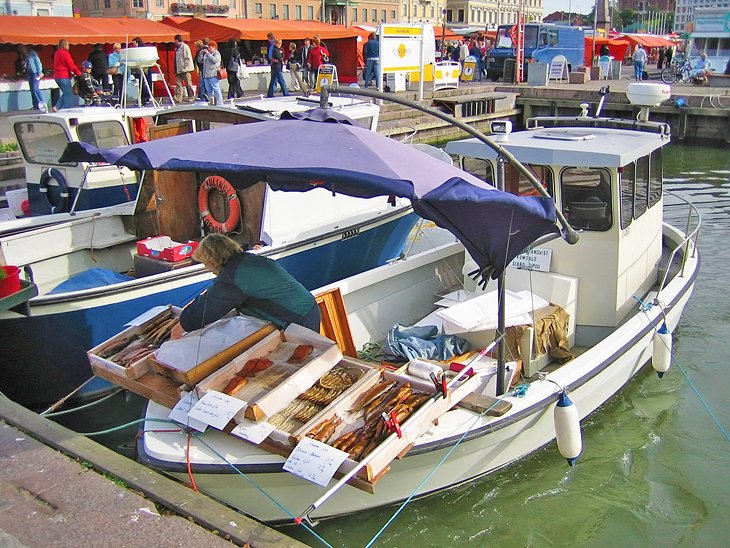
The harbor of Helsinki is an iconic part of the city, with several significant landmarks overlooking it. It’s also a popular gathering spot with a vibrant open-air market where local farmers, fishermen, food producers, and craftsmen sell their goods directly from their boats.
As you stroll by, you’ll smell the delicious aroma of salmon being cooked over cedar planks beside the boats, and depending on the season, you might also see a variety of ripe berries or baskets of foraged woodland mushrooms. The historic market hall, built in 1889, houses numerous food vendors, but the outdoor market is a year-round tradition, covered by tarps and tents in the winter months.
The Esplanadi, a tree-lined promenade stretching from one side of the Market Square, is where the city comes alive on warm summer evenings. The elegant buildings that border it include a pavilion that houses the Kappeli Restaurant, whose terrace is particularly popular during concerts at the bandstand.
Helsinki’s most distinctive museum, the Street Museum, is a unique one-block progression that leads from Market Square to Senate Square, spanning different eras from the early 1800s to the 1930s. Paving surfaces, streetlights, mailboxes, and phone booths change with each era, making it an interactive experience that gives visitors a glimpse into the city’s history. The statue of Havis Amanda, Helsinki’s symbol, stands atop a fountain along the promenade, adding to the area’s charm.
3. Rovaniemi and the Arctic
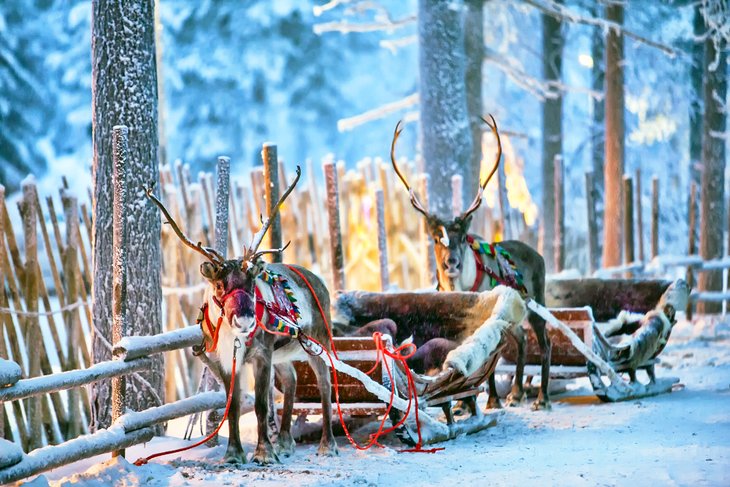
The town of Rovaniemi in northern Finland is often called the Gateway to the Arctic as the Arctic Circle runs through it. In the summer, visitors can experience the famous Midnight Sun, which stays above the horizon for a full 24 hours on the summer solstice in late June. From late May to early August, the sun remains high enough to prevent complete darkness, creating what the locals refer to as the “White Nights.” Visitors are welcome to join the locals in enjoying the great outdoors during this time.
Rovaniemi is situated in the middle of a vast natural area with rushing rivers, ideal for canoeing, swimming, and fishing, and adjacent trails are perfect for hiking and cycling. The city is famous for being the home of Santa Claus, who resides in Santa Claus Village astride the Arctic Circle. Tourists can visit a Sami reindeer farm or meet reindeer here.
For an immersive experience about Lapland’s culture and the Arctic’s natural history, meteorology, and geology, visit the stunning Arktikum Science Museum.
4. Helsinki Churches
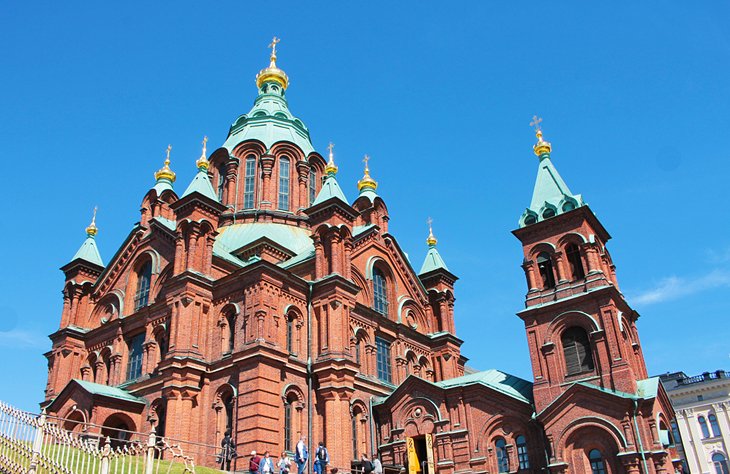
Helsinki has some of the most iconic churches in Europe, including two cathedrals and a modern architectural masterpiece. One of the most stunning is the Uspensky Orthodox Cathedral, located on the east side of the harbor. With 13 green-topped spires that end in gold cupolas, this cathedral is the largest Orthodox church in Western Europe. Its interior is decorated with intricate arches, gold, icons, crosses, and altars, providing a dazzling sight to visitors. While the cathedral serves Helsinki’s Russian population, everyone is welcome to explore this masterpiece of religious architecture.
Another impressive church in Helsinki is the Lutheran Cathedral, which is located on a hill behind the harbor. Its large size and close proximity to the harbor make it appear as if it’s standing on the roofs of the buildings below. The Neoclassical cathedral was built in the early 19th century and is a popular destination for tourists, with its tall green dome and grand steps that form the centerpiece of Senate Square. The surrounding buildings complete the enclosure, making it one of the most beautiful public squares in Europe. During December, the square is filled with booths selling local crafts and holiday foods, making it a festive atmosphere.
The Temppeliaukio Church is a unique architectural experiment located in the city center. The church is carved into solid rock, with a rounded, woven copper roof supported by concrete spokes. The acoustics created by the combination of copper and stone make this church a popular venue for musical concerts of all styles. The architects behind this modern masterpiece are Timo and Tuomo Suomalainen, and their work continues to draw visitors from all over the world.
5. Go Skiing or Ride a Dogsled
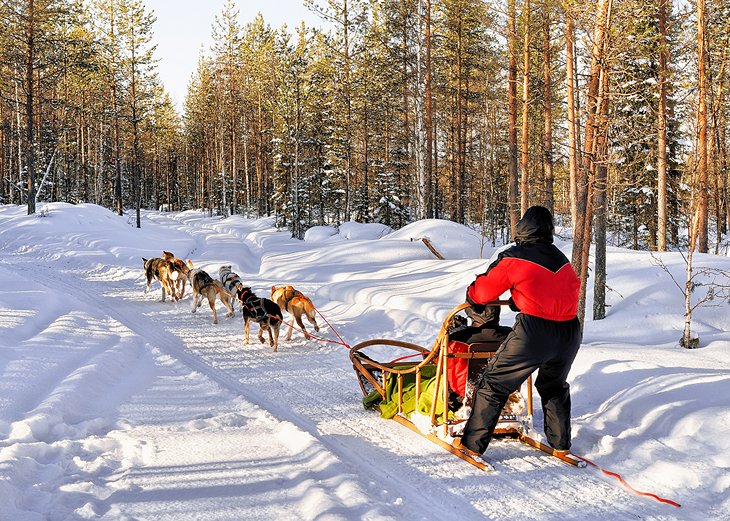
During the winter months, the Arctic region becomes a winter wonderland for those who love snow and ice sports. You can explore frozen lakes, visit Sami villages, and go on a dogsled safari. Or if you prefer, you can learn to drive your own reindeer sled, snowshoe, or cross-country ski for miles, all while enjoying the magnificent northern lights.
For downhill skiing enthusiasts, Levi is the place to go, located about 170 kilometers north of Rovaniemi. This winter recreation center boasts miles of scenic Nordic ski trails, which are even lighted for night skiing. Additionally, the area is home to Finland’s largest downhill ski area. Many hotels in Levi offer rooms with glass ceilings, providing the opportunity to watch the northern lights from the comfort of your own bed.
If you’re looking for a place to stay, the Levi Hotel Spa is a comfortable five-minute walk from the ski resort, where you can rent equipment. The hotel also features saunas, swimming pools, outdoor hot tubs, bowling, and a kids’ play area right at the resort.
6. Shop and Browse in Helsinki’s Design District
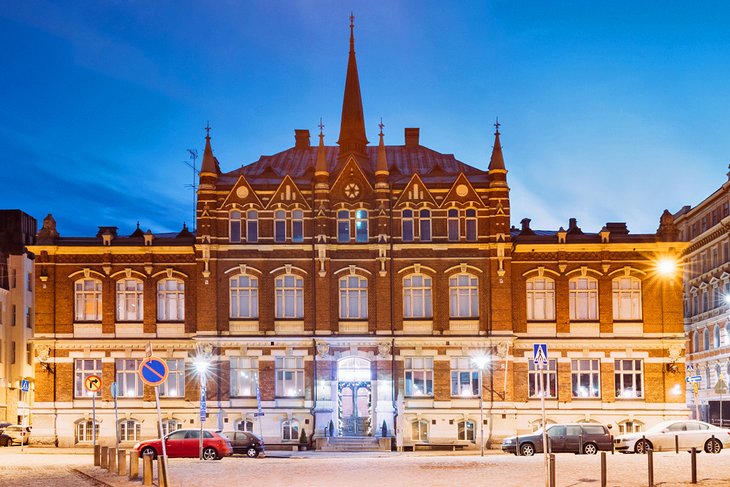
Helsinki is the hub of modern Scandinavian design, boasting an entire district dedicated to studios, galleries, and antique shops showcasing Finnish designers and their work. Spending a few hours in these neighborhoods is a great way to experience this lively facet of Finnish arts and culture.
The Design District Helsinki is a melting pot of creative minds in the central neighborhoods of Punavuori, Kaartinkaupunki, Kamppi, and Ullanlinna. Here, you’ll discover boutiques, galleries, and studios devoted to contemporary designs in fashion, jewelry, furniture, tableware, and everyday items.
In addition to shopping, you can arrange visits to designer studios, such as Raaka Rå (organic pottery) and Paja (artisan jewelry), to observe craftsmen at work. Contact them through the Design District website. You’ll also come across shops specializing in design-driven antiques and vintage Finnish designs, such as Art.fi and Artek 2nd Cycle.
For an excellent overview of Finnish design and a great shopping experience, visit the Design Forum Finland on Erottajankatu, which showcases the finest in Finnish design, ranging from dishes to paperclips. To learn more about Finnish design and craftsmanship and view some exceptional examples from the past, head to the Design Museum in the Kaartinkaupunki neighborhood.
7. Watch the Northern Lights
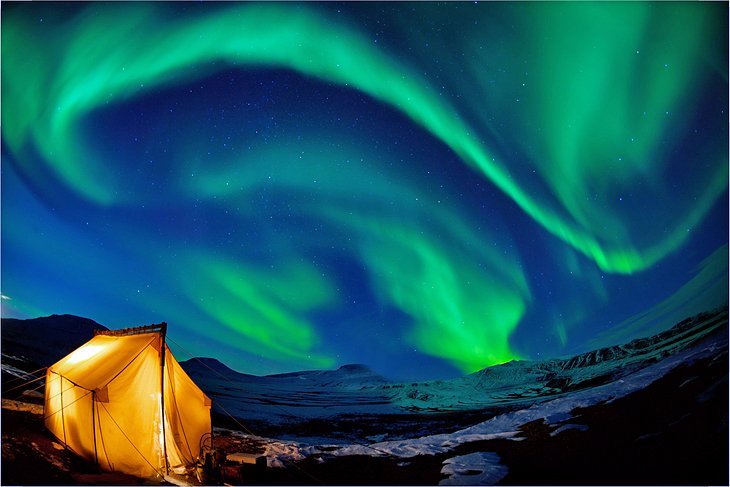
For many, witnessing the dazzling display of the northern lights is a once-in-a-lifetime experience. Finland is among the top destinations in the world to observe this natural phenomenon. While the lights can sometimes be visible in the southernmost parts of the country, the best sightings are in the region near or above the Arctic Circle.
Between September and March, visitors are likely to witness the spectacle if the sky is clear. Numerous hotels in the north are specifically designed to accommodate those who want to see the lights. Additionally, the Finnish Meteorological Institute provides a free service to sign up for email alerts regarding the Northern Lights.
8. Åland Archipelago
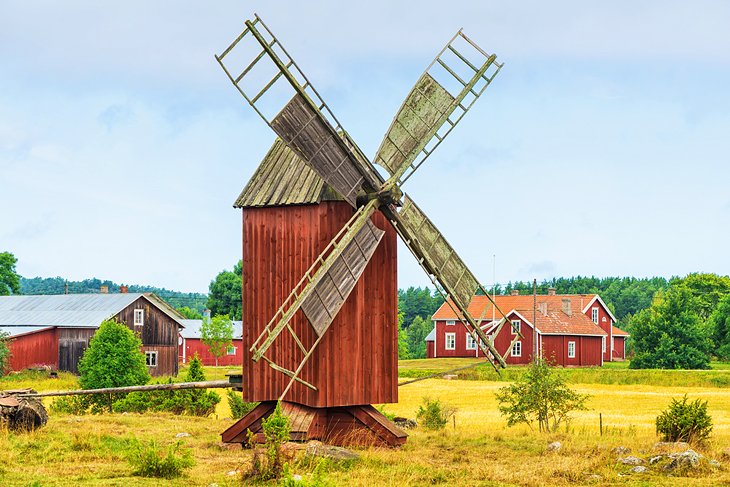
The Åland Islands (or Åland) are an autonomous archipelago between Sweden and Finland. A predominantly Swedish-speaking province of Finland, Åland is comprised of a few large islands and nearly 10,000 smaller ones. Åland has a unique history. It was ceded to Russia by Sweden in 1809. In 1854, a combined British/French fleet took the islands, destroying the fortress. After that, the entire archipelago was demilitarized and remains so to this day.
About 27,500 people live in Åland, with about 11,000 in the main town of Mariehamn. The main industry of the islands has always been shipping and trade, so the Maritime Museum, the Museum Ship Pommern, and the Maritime Quarter in Mariehamn are worth seeing to understand the islands’ fascinating maritime history.
Also worth a visit is the Jan Karlsgården open-air museum in Kastelholm, where you can see what a typical island farm looked like around 1890. However, the big draw to Åland these days is its unspoiled nature and beautiful landscapes.
On midsummer’s eve, Åland holds a massive and ancient celebration marking the longest day of the year. The lovely landscapes and seascapes make it a favorite with artists, and their studios and galleries are popular with tourists, who arrive by boat from Turku and Stockholm.
9. Turku
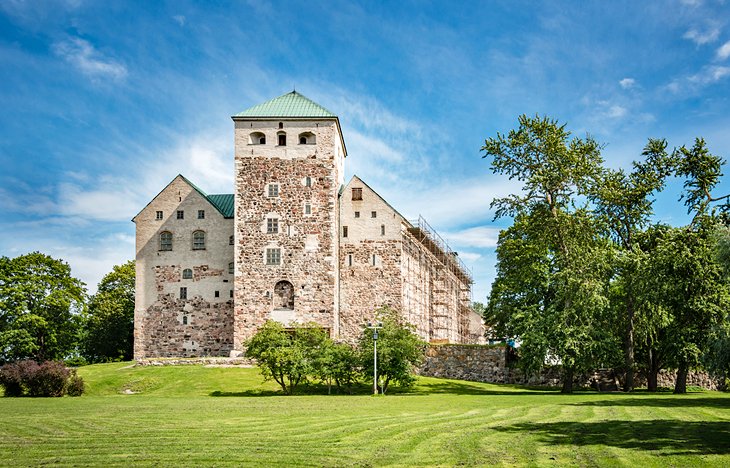
The southwestern Finnish town of Turku, the country’s oldest town and until 1812 its capital, lies on the Gulf of Bothnia, at the mouth of the Aurajoki River. Turku lies in the area where the successors to the Swedish Vikings landed in the 12th century and set out to conquer what is now Finland.
With eight centuries of history, it is today the most traditional medieval town in Finland, but in addition to its outstanding medieval buildings, you’ll find examples of Art Nouveau and modern architecture, such as the Sibelius Museum, by Woldemar Baeckman.
The river is a focal point for the city, lined with historic boats, some of which have been converted into restaurants. In the summer, locals gather along its banks in the evening and in the winter, it becomes a giant skating rink.
On the northeast side of the river is the commercial center with the Kaupatori (market square) shopping center and lovely Orthodox Church. On the opposite bank the medieval cathedral, consecrated in 1290, rises above the Old Great Square. It is a massive brick church in Late Romanesque style with Gothic and Renaissance additions and a massive 97-meter-high tower, which dominates the city.
During the midsummer Medieval Festival, the old square’s ensemble of historic buildings regains its medieval air with craft stalls and food vendors.
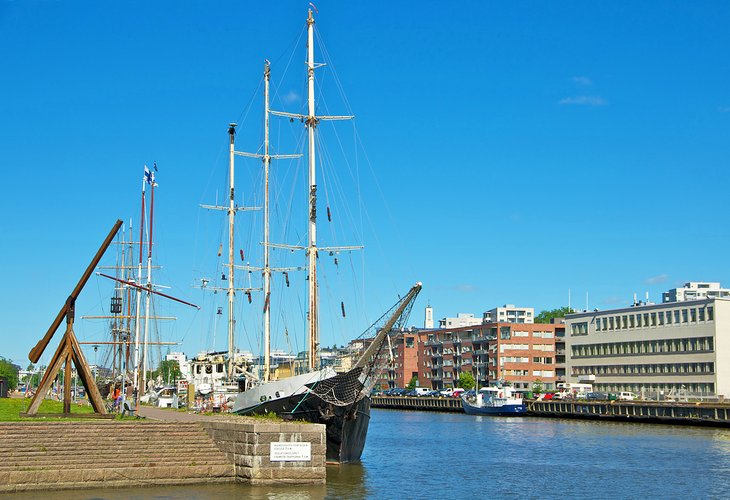
Just down from the cathedral along the river, two old sailing ships are moored – the “Suomen Joutsen,” now a training school for seamen, and the “Sigyn,” the last remaining wooden barque used for sea trade. Both are open to the public in summer.
Nearer the harbor is Turku Castle, built around 1300 on what was then an island at the mouth of the river. It was enlarged in the 16th to 17th century and now houses the Turku Historical Museum.
For a look at what Turku looked like in the early 1800s, stroll through the streets of the Luostarinmäki Handicrafts Museum, an entire neighborhood of 40 homes, the only ones saved in the fire that destroyed Turku in 1827. Preserved as a museum village, its homes and workshops now house artisans who demonstrate period crafts.
10. Porvoo
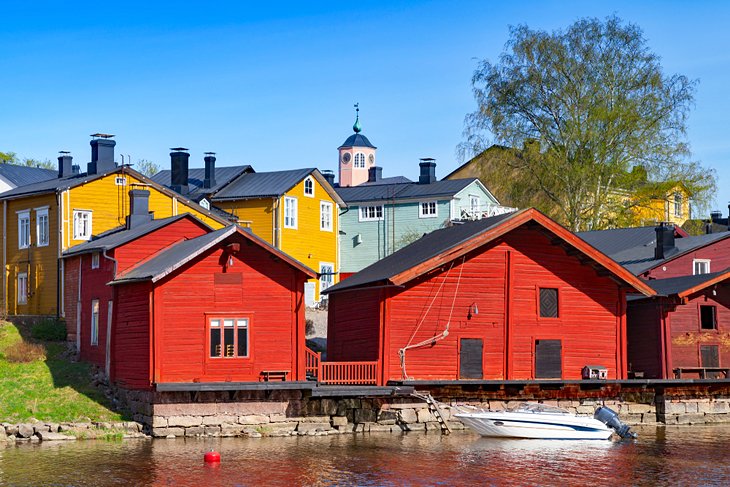
The country’s second oldest town, Porvoo, is 48 kilometers east of Helsinki. It rises from a picturesque riverfront lined with little red wooden buildings, through a charming tangle of old streets and ochre-colored wooden houses to its hilltop medieval cathedral. Highlights here are the ornate 1764 pulpit and wall paintings from the 15th century.
Between the river and the hilltop cathedral is the Market Square with two museums worth visiting. One has exhibits on local history and the other, the Edelfelt-Vallgren Museum, is of particular interest to those fascinated by the Art Nouveau movement. It features the furniture, ceramics, and other works of several artists who formed an art colony here at the turn of the 20th century.
Porvoo is still known for its fine crafts, so allow time for browsing the shops and studios. In the summer, you can visit Porvoo from Helsinki by boat.
11. Lake Saimaa and Savonlinna
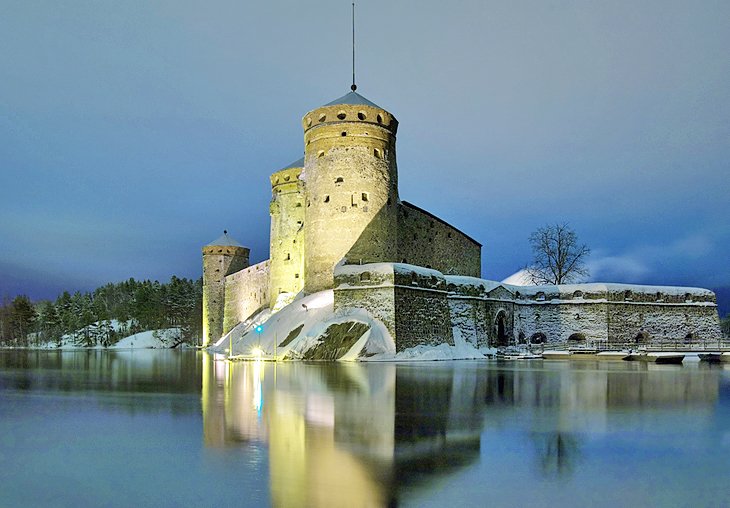
The entire eastern portion of Finland is more sea than land. With literally tens of thousands of lakes, rivers, marshes, and ponds, eastern Finland is a fabulous aquatic playground. The dominant lake of the region is massive Lake Saimaa, the “lake of a thousand islands.” Lake Saimaa itself has an area of some 1,300 square kilometers – excluding its numerous islands.
The whole lake system is drained by the river Vuoksi, which leaves Lake Saimaa to the north of the town of Imatra and flows into Lake Ladoga in Russia. The hilly shores of the lake and most of the islands are almost entirely covered with coniferous forest, with some birch forest farther north.
Savonlinna is the main city of Finland’s lake region. A popular spa and holiday resort, Savonlinna grew up around Olavinlinna Castle, begun in 1475 and Europe’s northernmost medieval stone fortress still standing.
The castle, which has been beautifully restored, contains a number of handsome rooms, among them the King’s or Knights’ Hall, the Congress Hall, and the Great Hall. Three massive round towers have survived, and in one of them, the Church Tower, is a small chapel. In the Great Bastion is a summer café.
East of Savonlinna lies Kerimäki and the largest wooden church in the world. A must do when in the lake region are the boat cruises. From Savonlinna, there are boat trips to the other towns on Lake Saimaa, to Punkaharju, with the Retretti Art Center, the largest in the Nordic countries, to the monasteries of Uusi Valamo and Lintula. Another day trip option is a cruise down the Saimaa Canal to Vyborg in Russia on the Baltic Sea.
Accommodation: Where to Stay in Savonlinna
12. Vaasa
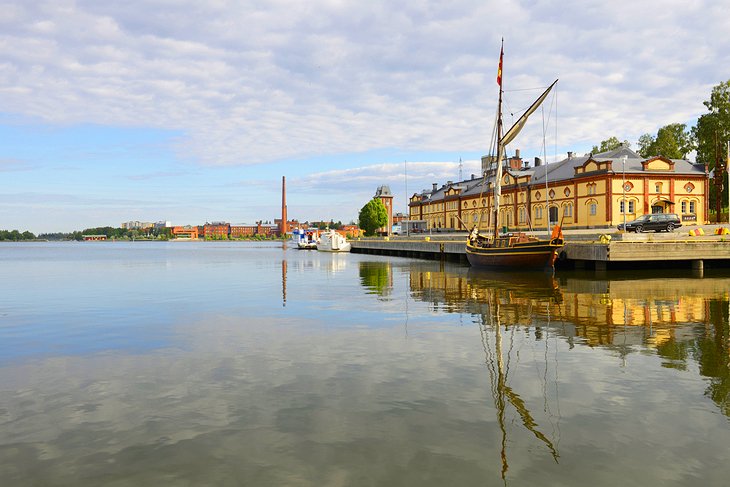
Established in the 1300s, Vaasa was an important town in the time that Sweden ruled Finland. The original town burned down in 1852 and was relocated six kilometers northwest near a better harbor. The ruins of the old city are now a giant park (Vanha Vaasa, Gamla Vasa).
The town is about 34 percent Swedish speaking and retains many ties to Sweden. Surrounded by a wide range of cafés, restaurants, and shops, the large market place is the center of city life. This peaceful town offers plenty of attractions. Visitors can walk along the waterfront, which begins in front of the town and extends for miles along the coast.
Other attractions include the Kuntsi Museum of Modern Art, down at the harbor, the Ostrobothnian Museum, the Terranova Kvarken Nature Center, the Tikanoja Art Museum, and the Vaasa Maritime Museum.
Just to the east of the city center, on an island, is Tropiclandia and tropical spa, a waterpark inside a heated dome packed with pools, slides, and saunas. South of Vaasa is the famed Söderfjärden crater caused by a meteor millions of years ago. To the north lies the Kvarken National Park, a wild archipelago hosting many great hikes and excellent bird-watching opportunities.
Vaasa also hosts a number of notable cultural events, including the Night of the Arts; the Korsholm Music Festival, one of the most noted of chamber music festivals; and the Vaasa Choir Festival. Vaasa claims to be the sunniest town in all of Finland, so soak up some rays on one of the many beaches.
Accommodation: Where to Stay in Vaasa
13. Tampere
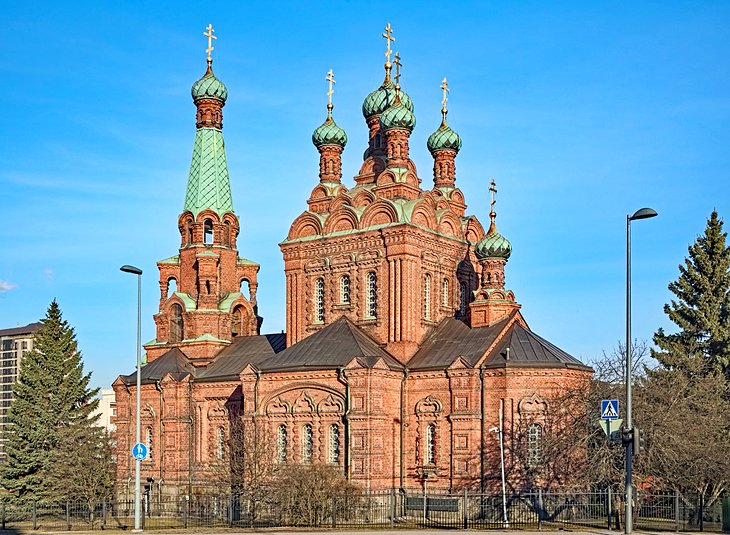
Founded in 1779 as an industrial settlement, Tampere is Finland’s third largest town, but doesn’t feel like a large urban center. It lies between two lakes: Näsijärvi, to the north, and Pyhäjärvi, to the south, which are linked by the Tammerkoski, a stretch of rapids nearly a kilometer long.
Along with its industry, Tampere is known for its active cultural life with an open-air theater and frequent festivals. These include the November Tampere Jazz Happening, a tradition now for more than 35 years, when world-renowned names in jazz perform throughout the city in small concert venues and clubs.
In the Vapriikki Museum, you’ll find the Natural History Museum and other exhibitions. Three churches are of note: Tampere Cathedral is known for its unusual paintings and frescoes depicting skeletons in black hooded capes, created in the early 1900s by Finnish symbolist painter Hugo Simberg.
The Kaleva Church, a soaring concrete building constructed in the 1960s has a floor plan in the shape of a fish, an ancient Christian symbol. The green-domed brick Orthodox Church of Saint Alexander Nevsky and Saint Nicholas has a sumptuously decorated interior.
14. Lemmenjoki National Park
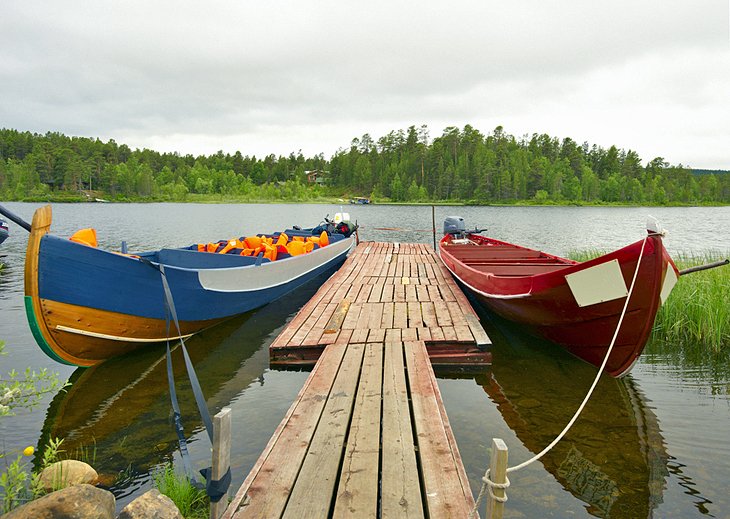
Anyone seeking an Arctic wilderness experience will love Lemmenjoki National Park. The tract of boreal forest is the largest park in Finland and one of the most extensive chunks of wildlands in all of Europe, covering more than 2,589 square kilometers. For the trekker, there are hundreds of kilometers of marked trails, as well as free and open wilderness huts and more sophisticated rental huts with sauna and campfire places.
The namesake of the park, the Lemmenjoki River, is a sight to behold as it flows down from the fells into a stunning valley of towering pines. Visitors can either rent a boat or take a tour. This is the place to find brown bear, wolves, and wild golden eagles, as well as moose and reindeer.
Accommodation: Where to Stay near Lemmenjoki National Park
15. Oulu
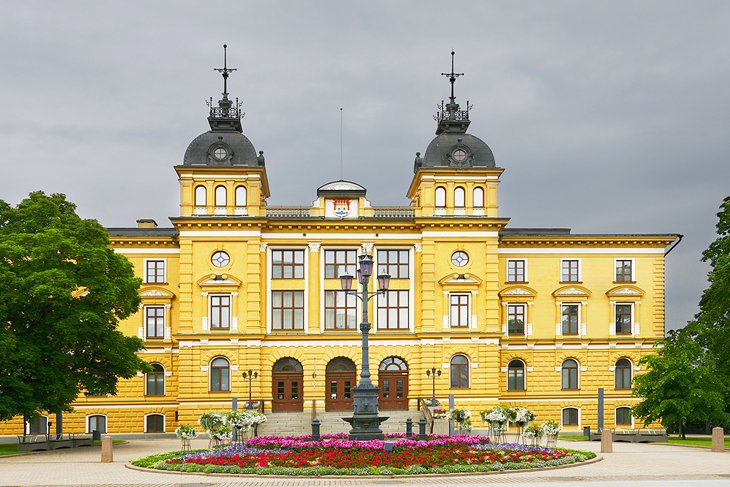
Sweet little Oulu lies near the north end of the Gulf of Bothnia, at the mouth of the Oulujoki river. It began as a village clustered around the late 16th-century castle built by King John III of Sweden on the island of Linnansaari at the mouth of the Oulujoki.
At the north end of the busy Kirkkokatu stands the cathedral, originally built in 1770-72. Beyond, at the north end of Kirkkokatu, a small bridge leads into the beautiful island of Ainola, where you’ll find a park and the Provincial Museum. Farther north is the Botanic Garden, and on the island of Hupisaari, a summer theater.
Another popular tourist attraction is the Tietomaa Science Center to the east of the Oulu Botanic Garden. In the summer, spend some time at the Market Square over coffee and classic Finnish pastries. A few kilometers up the Oulujoki is the island of Turkansaari, once the home of Russian traders in the city and now an open-air museum.
16. Hameenlinna
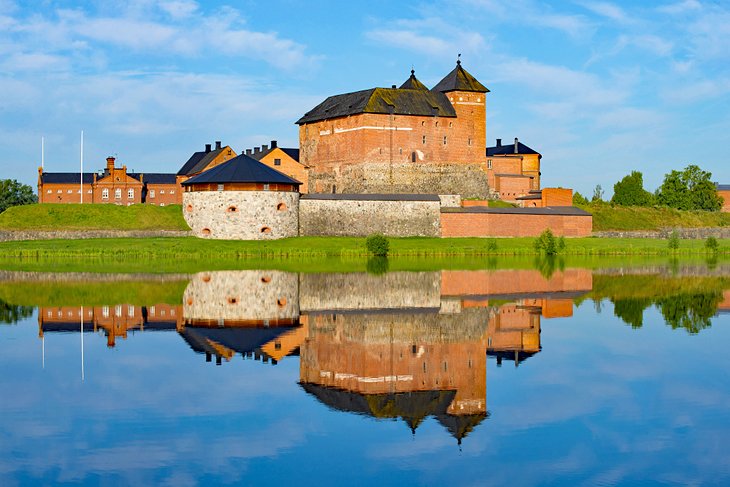
Like many Finnish towns, Hämeenlinna began near a castle, in this case the 13th-century Tavastehus Castle. Its distinctive red-brick fortifications top the list of places to see in Hameenlinna. The other place you shouldn’t miss seeing is Aulanko Nature Reserve. Part garden park, part forest reserve, it is the first National Urban Park in Finland.
The English-style park was constructed between 1883 and 1938, and in addition to hiking its well-kept trails among exotic and native trees, you can climb the 30-meter-tall granite tower on Aulangonvuori Hill for views across a typical Finnish forest and lake landscape. More than 50 different species of trees and shrubs are identified along the nature trail round Lake Joutsenlampi. Two historic pavilions and the ruins of a late 19th-century castle are also in the park.
Hämeenlinna was the birthplace of the Finnish composer Jean Sibelius (1865-1957) and north of the market Square is the Sibelius Museum; a little bit farther on is the Sibelius Park and the nearby Hämeenlinna Historical Museum.
Accommodation: Where to Stay in Hameenlinna
17. Ranua Wildlife Park
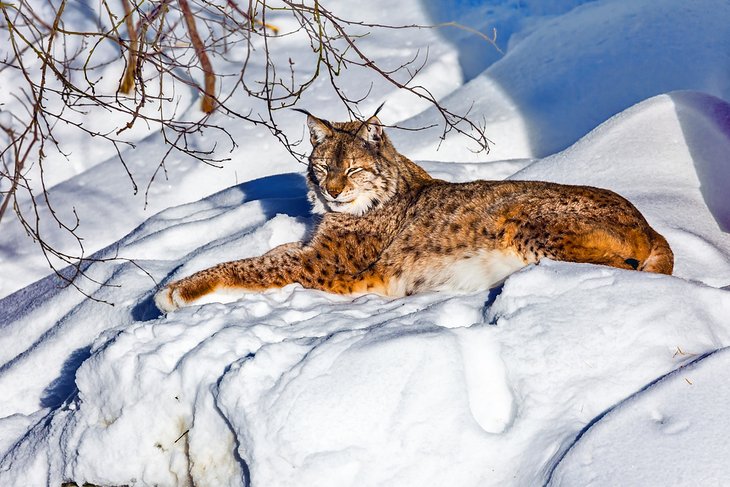
This park is part zoo and part wildlife preserve, home to more than 50 species of animals who call the arctic their home. Their most famous residents are Venus and Manse, the only polar bears residing in Finland. The park is naturally home to many reindeer, as well as the smaller wild forest reindeer and several varieties of deer.
Other park residents include large mammals like moose and brown bear, canines like the Arctic fox, grey wolf, and the dhole, and smaller animals like mink, otter, and stoat. There is also quite a variety of owls and geese, as well as several eagles and other birds. Visitors can stroll the grounds for a self-guided tour or book an “arctic safari” to learn more about the animals and their habitat.
Address: Rovaniementie 29, 97700 Ranua, Finland
Official site: https://english.ranuazoo.com

Leave a Reply